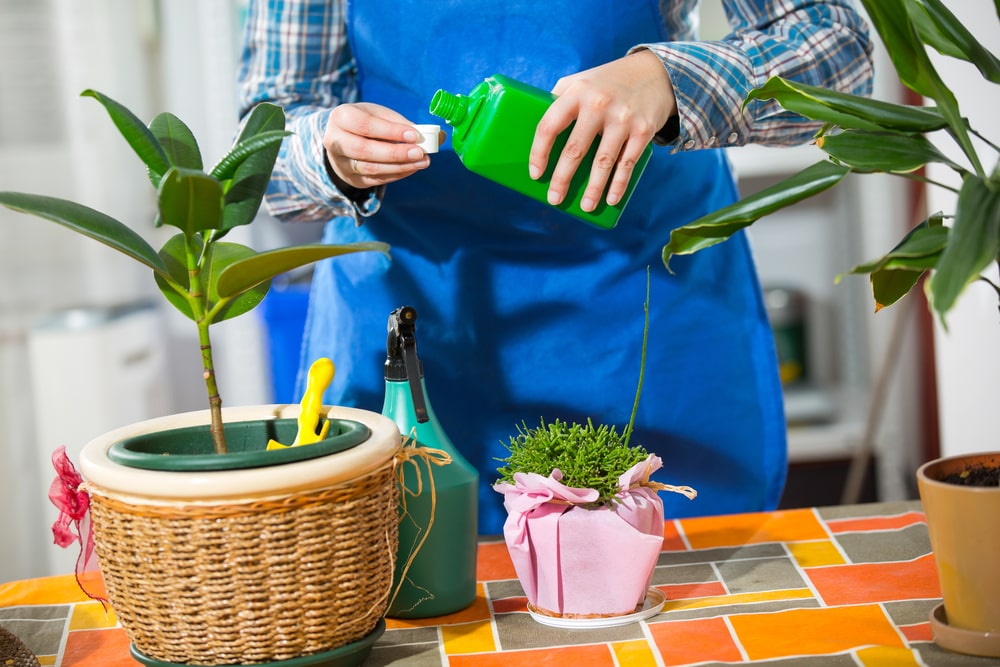By mid to late February, I usually begin feeding my indoor plants again—days are getting longer and the sunlight is getting a little brighter, so indoor plants are beginning to wake-up from their winter boredom. I usually stop feeding my indoor plants in November, December, and January. Days are short and the sunlight is weaker so plants are not usually actively growing then.
Food for Growth
Fertilizers contain nitrogen, phosphorus, and potassium in varying amounts. There are so many out there, it can be difficult to decide which one is best for your plants.
- Nitrogen helps with the growth of a plant and is necessary for photosynthesis.
- Phosphorus helps with blooming and root growth.
- Potassium also helps with root growth and with overall plant vigor.
- Plants also need small amounts of micronutrients like calcium, manganese, sulfur, boron, iron zinc, etc.
Which One is Best?
The correct formula to use depends on what you’re feeding. As a general rule of thumb, most plants grown for the beauty of their foliage should be fertilized with a well-balanced fertilizer. Jack’s Classic 20-20-20 is a good one. Most plants grown for flowers could be fed with an African violet fertilizer—it’s a blossom booster. The exception would be orchids and citrus.
What About Orchids?
Orchids need a balanced fertilizer, like 20-20-20. However, in the wild, orchids grow in trees, so their roots are not growing in nutrient-rich soil. They get minute amounts of decaying organic debris washing over them.
Feed your orchids HALF-strength, HALF as often as the label suggests. For example, Jack’s Classic suggests feeding plants ½ teaspoon per gallon every two weeks. For orchids, feed ¼ teaspoon once a month. Never feed a totally dry plant–water your orchid first.
How About Your Citrus?
My citrus gets fed Citrus-tone, according to label directions. If you can’t find it, then a good azalea fertilizer (or any fertilizer for plants that like acidic soil) works well. You want to feed them in late winter, the beginning of summer, and the end of summer. Don’t feed going into fall/winter.
Label Directions Point the Way
Whatever you’re feeding, always read the label directions! Over-feeding a plant can do more harm than under-feeding!
Stop by the Great Big Greenhouse and let us help you select the right food for your plants so they can thrive.


Thanks Bonnie. This is very helpful ?